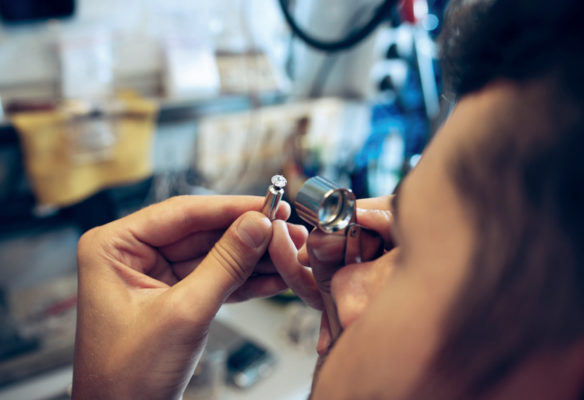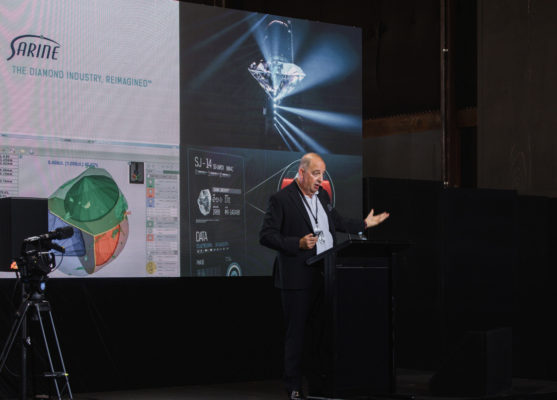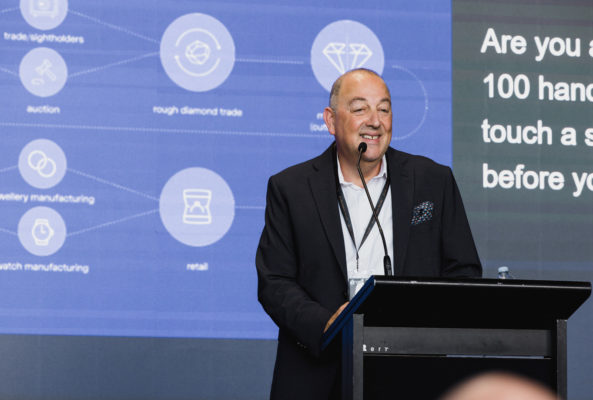Rami Baron – Q Report
I just returned from Melbourne where I attended the wonderful Jewellery Industry Network Fair.
Without a doubt, a lot of credit goes to Laura, Brett, Ewan and Andy for putting together such an event during these difficult times. They put on a professional event and we all look forward to the next one. As always, it’s about meeting and greeting, listening and learning as to what are the different strategies that jewellers are using to grow their business. On this trip I had an epiphany.

Consumers buy the story. Is it an old one or a new one?
I was speaking to several jewellers who came from jewellery families. In some cases, it was three generations of family jewellers. In listening to them, I recognised so much of myself and how I used to communicate when I had my jewellery stores. It’s so easy and comforting to define ourselves with the past. I was the first to say that I’m a third-generation jeweller. I even have that written all over my bio on LinkedIn now. So how can you, a new jeweller, who doesn’t come from a traditional apprentice workshop background, or diamond dealing family, compete with me or those who have that heritage, that training, that historical knowledge that is handed down from one generation to the next? Rather than beating around the bush, I’m going to get to the crux of it straight away. I must add that what I am about to say doesn’t apply to everyone, but it applies to the majority. With the advent of social media, a small independent jeweller can create as much content as a multinational jewellery brand. The beauty of the content is that it is authentic and about them, who they are, often what they do, how they look and how they speak. In fact, you get to know these people before you even make contact or visit them. These new jewellers won’t show you photos of the past and won’t have signs that say established in 1950. Instead, they have built a social media presence and marketing, which is very much about saying “This is who we are today”
As a consumer, you either buy into their story or not—that’s up to you. The power of social media has meant that the trust that a consumer needs to build before they purchase is largely formed before they even enter the jewellery operations of this new generation of jewellers. An easy way to understand this is to observe the big luxury brands. The consumer has already bought the Tiffany brand before they enter the store. The salesperson needs to be friendly and nice, but the trust in making a purchase has already been created by the marketing message that the brand has promoted. Again, if the customer aspires, relates, and connects to Tiffany’s message, then it’s the experience that will facilitate the sale. To a large extent though, the decision to buy a Tiffany piece of jewellery was already made. The old and traditional jeweller thinks that just by showcasing jewellery, they will attract the next customer. They also rely so much on their past to build trust when they first meet the customer. When and if they get this concept that trust is built before the customer interacts with them, they too will see a massive change to their business.

Modern issues do influence your customers
Of course, there are a few other factors. The new generation of jeweller is happy to focus on the gems and where they come from. There are comfortable to talk about traceability, sustainability and transparency and don’t keep saying “my customers aren’t interested in that, they never ask.” Mark my words — if they haven’t, they will, or you are dealing with an older demographic. Do you think that a 28-year-old has any idea who or what DeBeers is or was? This company literally created the modern diamond engagement ring industry. They also stopped generic marketing of diamonds 20 years ago which contributed to the slowdown of our product in the luxury market, and they lost a name which was as famous as Rolex today. If you don’t come from the jewellery industry historically, you’re not saturated with stories of how things were—the good old days. In the 1970s, jewellers told me that a customer would come in to purchase an engagement ring, were told to sit down at a table where they would be shown six designs from which they had to choose one. The customer provided their budget, they were shown what fitted the budget, they paid a deposit and put the ring on layby. The finger was measured, they were asked how long they would need to pay off the ring, and after the second last payment it would be ready for pickup. The markup was normally 2.5 to 3 times on cost. No credit cards at that time.
I think it goes without saying, that you need to be comfortable with digital photography. Learn how to get the most out of your iPhone or Android camera. Understand how to improve lighting, ask others how you can combine a Zoom call, flicking back and forth between a face-to-face discussion and the image projected on one of your monitors. Make sure there is good lighting on your face, and the background reflects the sort of business you are. Everything you do must align with the image you are trying to create. You must be authentic, and you must walk the talk. Every piece of marketing literature, especially when it comes to social media, screams about this very issue. I don’t care if you’re ultraconservative or way out there, if it lines up and your marketing tells a true story of who you are and what you do, your customer will buy you and your story before they get to your store or showroom. My conversations with generational jewellers were about defining their future because they found themselves inadvertently trapped in the past. My conversations with the new generation of jewellers were about technology, bringing NFT’s and crypto into their business, utilising online databases of merchandise and stock, rather than tying up money in physical stock.

Share and embrace change
This new generation of jewellers are not fearful to share knowledge and information with other jewellers. I have written in numerous articles about my disgust at the lack of sharing. Yet when I was in Melbourne, I saw a couple of the new generation of jewellers visiting a forward-thinking tech savvy jeweller, who was happy to sit and share the logic of his software. He openly shared contacts he used for his fit out and the whole logic of his business structure. No fear, no secrets, just “This is how we do it, and I hope it helps.” Change isn’t easy for any of us. I gave a presentation at the fair explaining blockchain, crypto currency and NFT’s and how they relate to our industry. It will be on the Jewellery Industry Fair website and Facebook shortly. I finished my presentation with the following advice:
“This crypto, NFTs and let’s-not[1]talk-about-the-Metaverse requires a radical mindset change. You don’t have to jump into it, but you need to understand it. The key is never to stop asking questions until you get some comfort, getting your head around it.”

P.S. And yes, at some point in the not-too-distant future, you too will accept crypto as a form of payment. And yes, chill out about that because in reality you already have a digital wallet on your phone—it’s just limited to one or two banks.
See Rami Baron’s talk from the 2022 Jewellery Industry Fair here: